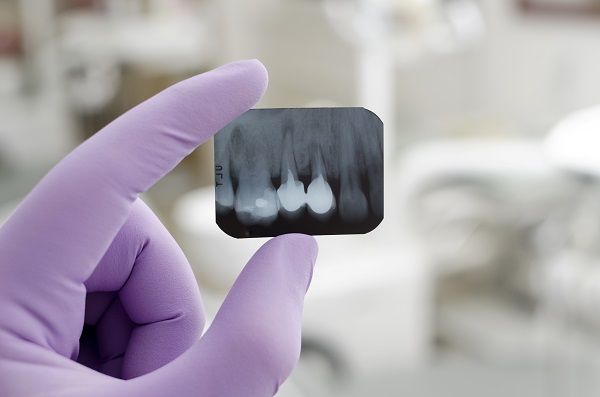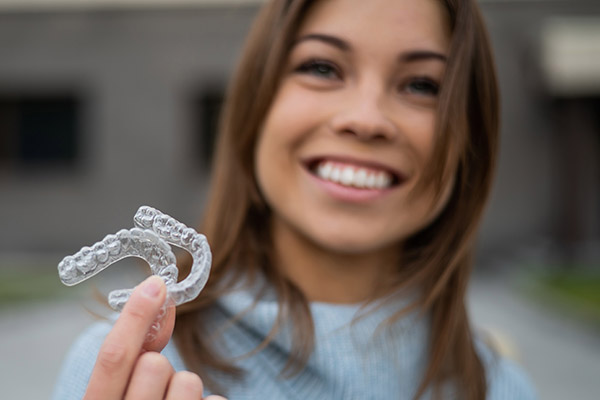Digital X-Rays and Radiation

Digital x-rays reduce your exposure to radiation by up to 80% compared to traditional ones. X-rays are an essential diagnostic tool dentists use to examine the insides of a tooth, gum tissues, and the bone structures in the mouth.
Getting a digital x-ray is a non-invasive procedure that does not cause any pain. It quickly produces the images needed to address the patient’s mouth, eliminating the need for multiple visits or waiting for results.
X-rays have been used in dentistry for over a century. Traditional x-rays involve using a film to capture images of the patient’s internal structures. It often took hours to process the film and get the results back. Digital technology has made the process a lot smoother and more affordable. The fact it lowers the patient’s exposure to radiation is a nice bonus.
While traditional x-rays leave patients exposed to more radiation, it should be noted that the levels of radiation patients are exposed to are less than what sunlight exposes them to daily. It is a negligible amount of radiation, but less is viewed as better since radiation is bad for the body.
How digital x-rays help to keep your mouth healthy
The process of getting digital x-rays usually involves wearing a large lead blanket or apron that shields the rest of your body from radiation. An x-ray sensor is then placed in the patient’s mouth to take digital images of the patient’s internal structures.
The type of sensor used varies depending on the type of x-ray being performed. These sensors typically do not cause any discomfort, but they can trigger some people’s gag reflex. Children are more likely to feel uncomfortable when x-rays are taken due to their smaller mouths and stronger gag reflex. Patients with sensitive gag reflexes should let their dentist know so accommodations like using smaller sensors can be made.
Some of the commonly used types of x-rays in dentistry include:
- Bitewing x-rays: These are typically taken once a year to detect cavities inside and between teeth. It can also be used to evaluate the bone structures that hold teeth in place
- Periapical x rays: Also known as PAs, these are used to get a complete picture of a tooth’s internal structures from its roots to the top of its crown. They are typically recommended when a patient complains of symptoms that originate from a specific tooth. PAs can be used to detect deep decay, damage to bone structures around a tooth, and abscesses
- Occlusal x rays: These are used to examine the internal structures of the floor or roof of a patient’s mouth. They can be used to detect tumors, jaw abnormalities, impacted teeth, and supplemental teeth
- Panoramic x rays: These are recommended every three to five years to paint a complete picture of a patient’s mouth. They are used to prepare for surgical procedures or orthodontic devices
Digital x-rays are safe
Digital x-rays help to evaluate the internal structures in your mouth. Call or stop by our Reston clinic to learn more about how digital x-rays work.
Request an appointment here: https://www.orthodonticprecision.com or call Precision Orthodontics & Pediatric Dentistry at (703) 391-8800 for an appointment in our Reston office.
Check out what others are saying about our dental services on Yelp: Digital X-Rays in Reston, VA.
Recent Posts
Metal braces have been used to straighten teeth for over a century and remain an efficient way to straighten teeth. These oral appliances work by applying constant pressure on your teeth, slowly improving their alignment over 12 to 36 months. The appliance is fixed in your mouth after a dentist installs it, and it stays…
Like braces, clear aligner treatment can successfully straighten teeth and correct bite problems. Braces were the most popular and available choice for many years, but aligners are more common today than ever. If you are unhappy with the way your smile looks, aligners can be effective. Understanding how aligners work and what the process is…
As you prepare to get braces and start wearing them, you may be a little nervous. It can take some time to get used to this treatment. You will encounter some challenges, but the result can help you achieve your goals. During the process, you need to be diligent about caring for your braces. This…
A kids dental specialist is a type of dentist who focuses on seeing children and helping them with the needs unique to their developing dentition. Parents may wonder whether seeing a dentist specializing in kids is essential or if they can just see the same dentist the adults in the family trust.While a general dentist…


